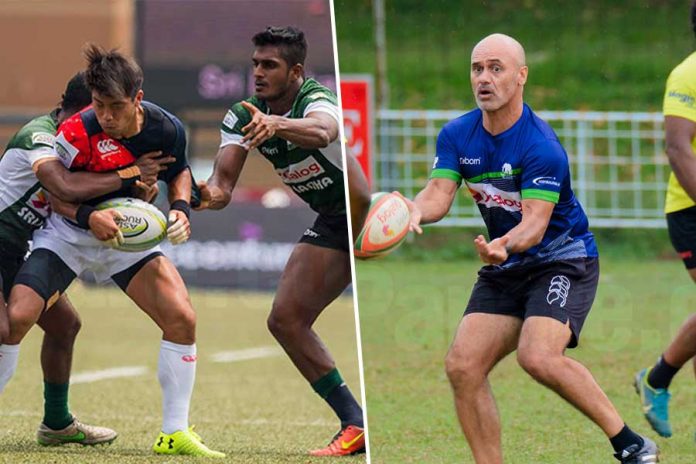Third best and with desirable comfort. That’s what the Sri Lanka’s men’s sevens Rugby team, albeit with a very depleted line up, achieved on the weekend gone by.
They now do so with their eyes closed and have underscored this ability. Based on another, excellent “country run” like performance, only to come undone against the “city” big boys. Namely, Japan and Hong Kong.
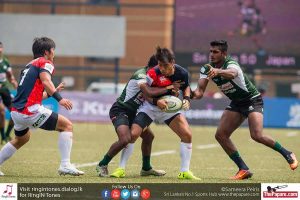
For the record, Sri Lanka bloused Philippines (Volcanoes) 40-12 to have their cake off the tournament’s Plate. Picture a Tusker, putting out a volcano with a gush of water. A very credible and entertaining way to end this campaign. It was a very enjoyable watch.
Hong Kong, two competitions running, met Japan in the Cup final– only to be beaten 12-0 as the Japanese got one back from their Asian games upset. There is seemingly, nothing between them.
The weekend’s big picture
Sri Lanka with good sentiment, can now take heart that every time they compete at this level– should and will make the final four. No matter who they play and how they have to, the Tuskers make good of every chance to claim a semifinal spot. Based on their current form, that is a bare minimum pass mark. It’s great EXPOSED form to take forward for the rest of the year.
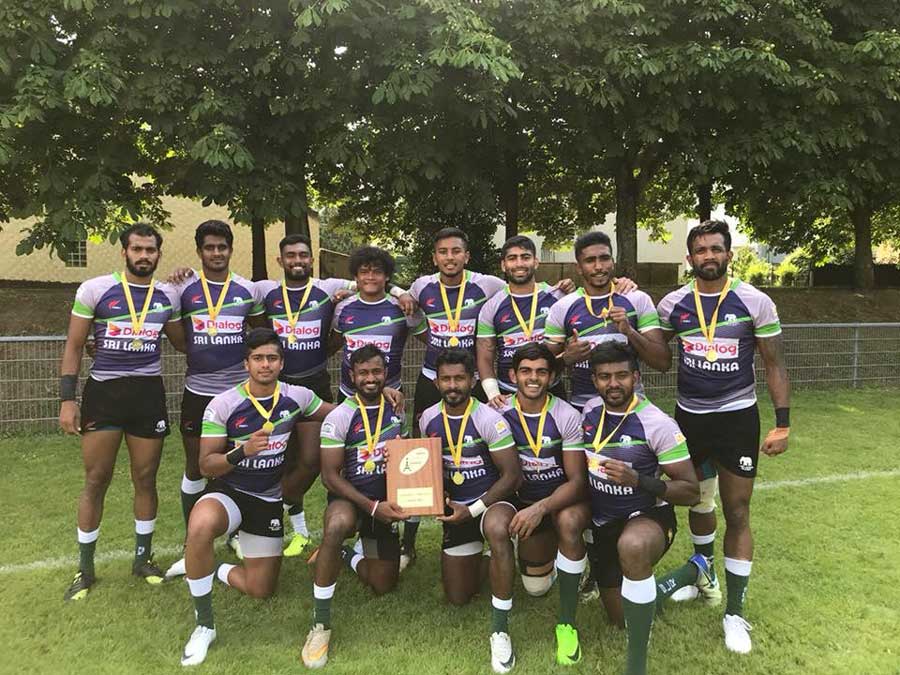
That’s essentially where the good news ends.
Apart from the usual razzle, dazzle– thrill a minute type of rugby, this team seem to make the same sorts of errors, lacking in the same sorts of playing patterns (against the same opposition). All this has been well documented previously.
Seemingly, not wanting to address these issues or the preparation for such playing patterns. Namely, holding the ball in contact with good ruck recycle to follow. Moreover, there is a significant lack of wanting to select players who can hold the ball after the collision. They need to have the technical ability to be good ruckers. Not just against the country form but especially, the metropolitan duo in Japan and HK.
The dominant reason for this broken record to be played over and over is the lack of physicality and inability to dominate the collision or contact area. Then comes the ball security. There is obviously no ball security if you don’t win the collision.
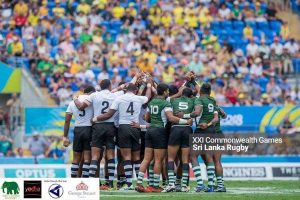
After all, Sri Lanka has no lack of “expert” coaches at schoolboy level but unfortunately, key skills can get omitted when not developed from junior levels by opting for the way short way home. The price of which the national rep grade is experiencing now.
Let’s not flog that dead horse but instead look at some key selections or non-selections which raised its head prior to this tournament. High Performance management process or the lack of it.
High Performance management
The week gone by gave me the perfect example to explain this in a forthright manner. A situation which in a real, professional world of sport is common place. Keywords– real and professional.
Let me start by saying that high performance management is far more than just looking cool in sponsored gear and falling back on an appointment (be it political or otherwise) on the basis of a playing history of sorts. Popular choice and myth has this method as the island nation’s perceived ability for any such position. It is not. It requires, trained, skilled, articulate planning and execution.
It may “feel” as if it’s the right path but unless the appointment/s understand and are educated in the area of high performance management, it will only lead to low-performances and inconsistencies.
People tasked with HPM (High Performance Management) must understand professional demands of and on players, sponsors, teams, coaches and above all a fee-paying public. How the game is viewed and how it needs to be played to attract and deliver a consistent product. All that starts behind the scenes, is played on (in this case) turf, played out on television (or internet) and ends up in the minds of spectators. The better the product the more sense it makes at the end. This, in turn delivers value to sponsors who pump in more dollars.
Decisions made in and around HPM have to make sense and accommodate all these stakeholders which leads to – High Performance.
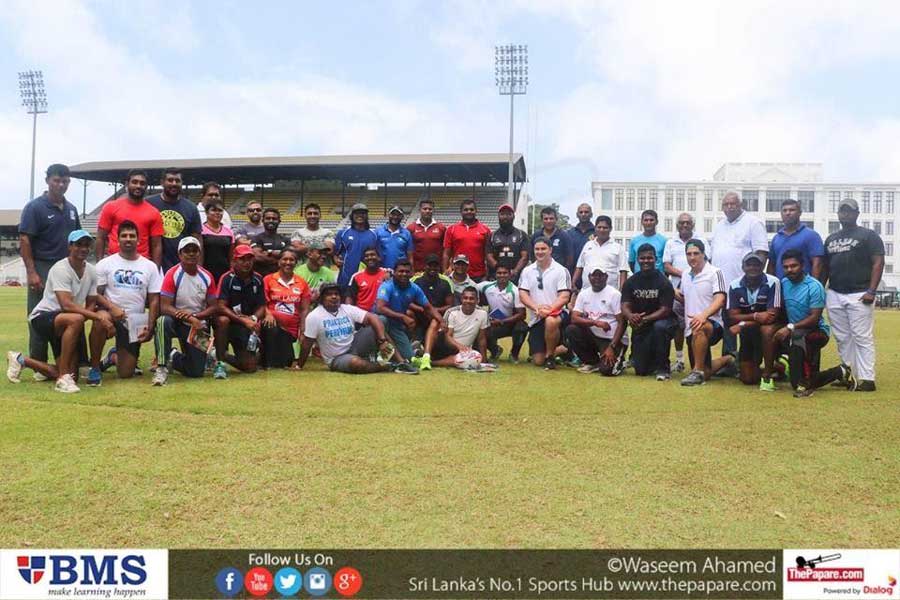
Be that as it may, you have to understand what the reasoning is and what pushes players to pick one over the other. It is obvious that economic reasons are a key driver but in theory, making either choice financially neutral will take that fact out of the equation. Pointing towards well-regulated and high performance driven contracts. (which I will elaborate later in the piece)
Also, I would like to think and treat each case on its individuality. After all, the club vs country dilemma isn’t as prevalent as you think it is. It gets attention when it does occur, like over the previous fortnight.
They, then surely cop criticism for such decisions and given that there is little to no “High performance” drivers to regulate and assist player growth, it’s each to their own. Furthermore, having plenty of moral high talkers, the situation will only magnify. It’s always easy to castigate those who have the ability to earn good money by those who haven’t or can’t.
The irritation with this type of behaviour though is that any such player, no matter how good he is, will be the first to get the cold shoulder when things don’t go right, such as– coming back from injury. Fans, administrators, fellow team mates and selectors, who are no more human than you and I will never take kindly to anyone who is seen to sow more seeds in their own backyard than the wider cause. That said, this is very common in professional sport.
For example, the previous British and Irish Lions tour to New Zealand, saw the Lions tour group arrive in two batches due to this very reason. I can understand this being a key issue in the major rugby playing nations as millions of dollars are at stake.
So, club owners will fight the respective unions tooth and nail to have their best players on their books. To win and win well. Attract more TV ratings, sell more advertising, merchandise and so forth.
Please, keep reading. It is your patriotic duty.
Strategy and structure
Professional Sport is a serious business, where sound strategy will always be followed by sound structure. The two go hand in hand. That should make simple sense and is easy to understand. Good strategy will create good structure.
So, what was the strategy when dealing with absence of a player or players and what is the structure in place for replacements? Furthermore, what is the strategy to make good of the existing players and what structures are available for them to get better or fit them in a good cycle?
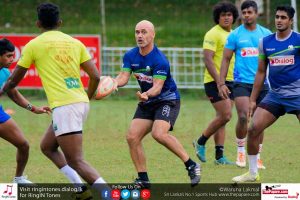
Having managed professional-unarmed combatants, prize fighters, on the world’s highest grossing PPV (Pay Per View) platforms, there is constant pressure to manage promotional and appearance commitments which span across the globe and different time zones. That being said, loyal- local promoters demands where a set purse outweighs the option of a global Pay Per View (PPV) percentage and a low appearance fee.
The second being a riskier but higher return on investment. Further, allowing for career defining opportunities which have allowed for several of my clients to become financially secure, for a life after competing professionally. Opting for the global ticket against local loyalty. Promoters who have backed you from day one and during those “tough times”.
To best manage this, we have always found a well-defined structure built on communicating with all stakeholders. Money is of course a huge driver but do understand it is a byproduct of everything you do. That becomes very clear when you have a good strategy and structure in place.
Athletes with high self-efficacy or for an easier definition, “good ego” want what’s best for them. Be it money, fast cars, the spotlight, match winning moments, air time with post-game media etc. That comes with the territory. Rugby players are no different.
Moving forward, it would be prudent when players aren’t “available” for whatever reason, there needs to be a bridge (strategy) between club and country (SLR) to discuss matters for a contingency, be part of a prescribed structure which gives them game or training time. Maybe, a placement overseas to train where it is sanctioned by the SLR. A union to union deal such as with Fiji or any of the pacific islands. Such a deal will eliminate any “unsanctioned” game time or allow for a “driftwood” type solution.
Furthermore, it doesn’t need to be only when there is an “availability” issue. Non-selected touring members on contract as part of a wider training group can be subjected to the same regime. This gives SLR and selectors better access to well-prepared players. Allowing to pick “city” form for city expectations.
These placements and performances MUST then be closely monitored by the HPM. It’s not rocket science. Regardless, everything needs to be communicated, monitored, written and measured. What gets written- will get measured. What gets measured – will get done. What gets done- will give you results. Anything else is just a pipe dream. Dreams are exactly that and most of them never eventuate.
Again, if you look at this objectively, both club and union talk it over as mature high performance entities should and figure out what’s best for both club and country. It is very much a two way street. Moreover, this will avoid players “cherry picking” the perceived “good tours” as they have to map out a playing schedule with both club and country HPM.
There is no way around this. It will be part of a serious commitment to assure contracted players get the best exposure to further their careers and in return serve national duty optimally. If they don’t meet the requirements, then it’s hit the road jack and next cab off the rank takes his place.
Sri Lanka Rugby, previously employed Inthi Marikar as their HPM director who resigned to take up a rugby Director’s role with Trinity College-Kandy, currently training in Wellington, New Zealand. As someone who has studied and immersed himself in the Kiwi system, Trinity will no doubt benefit from his expertise and their boot camp. SLR’s loss is Trinity’s gain. I personally look forward to their improvements when I call next year’s Bradby from the commentary box.
The HPM post at SLR has since not been filled. Maybe it is time. I am sure there will be no shortage of “candidates”. That said you don’t want to fill it for the sake of it as it requires rugby intelligence and ability.
Appointing someone who is qualified and suitable to create, then execute good strategy to form an even better structure is critical. His or her ability to communicate with everyone, a rare skill at the best of times is another critical factor.
Wider training group based selections
Be it intentional or accidental, it seemed like this team was picked from a wider training group which on paper looks excellent.
To summarize, Sudarshana Muthuthanthri and Danushka Ranjan were both out with significant injuries. Bad timing, given the momentum SL built from the Asian games performance Vs. Japan. Another first-choice selection in Tharinda Ratwatte, New Zealand bound for a stint with his rep club– College Rifles in Auckland and obviously, Jason Dissanayake for well documented reasons. Three solid and automatic (non) selections.
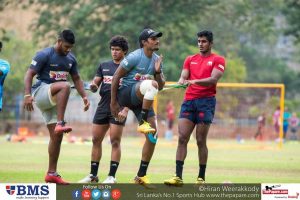
This follows similar gigs involving Sudarshan Muthu who played regional rep sevens for Auckland, which is an incredible feat in itself and Kevin Dixon, completing a five week adventure with Grammar TEC in Auckland at senior reserve grade (formerly Grammar Carlton).
One way or the other, based on the talent pool available, SLR will have to offer individual, specialist contracts to players. This means the selected player will have to choose one format over the other. Sevens or fifteens, if, Sri Lanka are seriously going to challenge the Asian “city” form and beyond. That’s a whole other discussion which I will leave for a later date.
Given the workload and year-round commitments, it will be near on impossible to play both formats and be successful at it. These players aren’t physically and mentally geared for that level of intensity. In the modern “professional” era, no matter how loosely that is defined and operational in Sri Lanka, money does and will make things happen. Nothing ever happens in the island nation for love, not at least for a few decades.
Contracts, it goes without saying MUST be enforced the way they are meant to. When you agree and sign on terms, shake the other parties hand, you then stake your integrity with it. Treating it with disrespect means that it is not worth the paper its signed on.
This is going to be a huge challenge for SLR and ad-hoc imposing of a singular will won’t help. Based on what we are witnessing with the present “frosty” relations between a few clubs and the powers that be, we are bound to see the butting of heads and throwing of tantrums. All that can change if everyone decides to talk and find a way forward. That is of course if the game is to become truly professional. There is no choice in that regard. That being, constructive communication.
The Bolter
Moving on to the good oil, we have a true bolter.
One very eye catching player included on the back of his Junior Tuskers form was Dinuk Amarasinghe. It couldn’t have happened to a more deserving and hardworking candidate. In fact it was more surprising than not, for him to miss out on selection for the Asian games based on his under 20 form. He is a skilled footballer who has the physicality required for the big league. He, in my opinion is captaincy material in waiting. Whether that comes true, only time will tell.
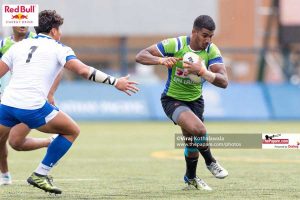
Who and what are currently being picked may very well work against the lesser sides who very much mimic your typical, local run on team. If that’s where this team wants to progress to and be content with, well, Sri Lanka have well and truly achieved that. Occasionally giving the top teams a shake as was the case against Japan at the Asian games. Mind you, it was a brilliant shake. Japan got the scare of their rugby life.
However, if they are to seek consistent, ruffling of feathers and parity (to some degree), then being bold and looking for value across the “wider” training group is critical. Dinuk showed this with his performances, especially against China with his willingness and technique in the ruck.
Big league requirement
Local rugby can happily carry on and expect to show the same level of results, week in week out if SLR stick to this same formula. It has to be said, that to get them to this level some very good things have been done and happened in the recent past. I will say that in earnest without getting political or prejudice.
If there is going to be any hope of furthering these results, then the High Performance Management at SLR needs to kick in and look to proactively place a revolving squad of players, in competitive environments to build EXPOSED form. Drawing up their contracts which are flexible enough to accommodate both club and country.
It is afterall the big boys league and you need to wear your big boy pants. Country form is good but that alone is not enough to deliver on city expectations.

